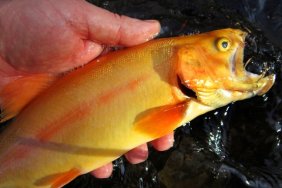 Inline spinners have long been a staple in the tackle boxes of anglers across the country, and with good reason. They can be used with great effectiveness on a number of species, they’re available in a wide variety of patterns and sizes, and they simply catch fish. Today, we’ll learn a little more about the Anatomy of inline spinners to gain some more insight as to what makes up these incredible lures.
Inline spinners have long been a staple in the tackle boxes of anglers across the country, and with good reason. They can be used with great effectiveness on a number of species, they’re available in a wide variety of patterns and sizes, and they simply catch fish. Today, we’ll learn a little more about the Anatomy of inline spinners to gain some more insight as to what makes up these incredible lures.
An inline spinner is designed to imitate the flash and movement of a small bait fish as it moves through the water. It accomplishes this task exceedingly well, thanks to a blade attached near the head of the bait that spins rapidly during the retrieve or when drifted against current. The flash created by the blade appeals to a fish’s predatory instincts to strike. Blades come in several color patterns—copper, gold, silver, black with yellow spots, white—and can also be hammered to create a different type of water displacement.
The body of most inline spinners consists of a combination of plastic or metal beads and a body piece. These components combine to create some noise in the water and give the bait some bulk to get it out there and into the strike zone.
Bringing up the end of the inline spinner is a treble hook. However, some models also include bucktail that pulses in the water, as well. Larger inline spinners designed for pike and muskie are known for incorporating this feature. A small diameter stainless steel wire is used to hold the components of the inline spinner together.
These components together create a lure that casts like a bullet and slices through the water with a flash that that drives fish crazy. If you’re looking for a good gift for the angler in your family, or just interested in restocking your tackle box with solid options, inline spinners and inline spinner kits are a safe bet. Whether you’re on the river for trout or fishing a farm pond for that big lunker, inline spinners are a sure-fire way to catch fish. Plain and simple.








